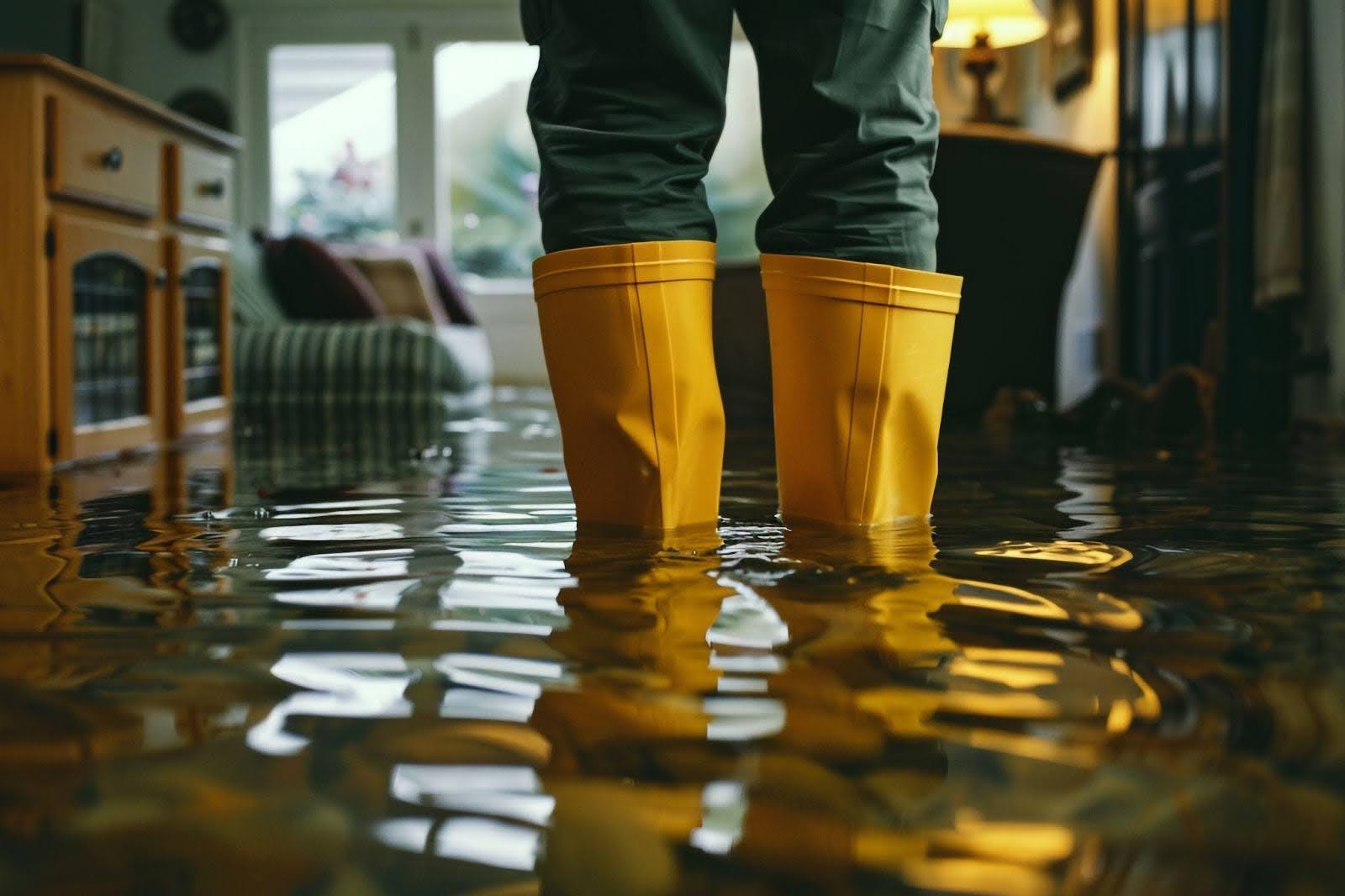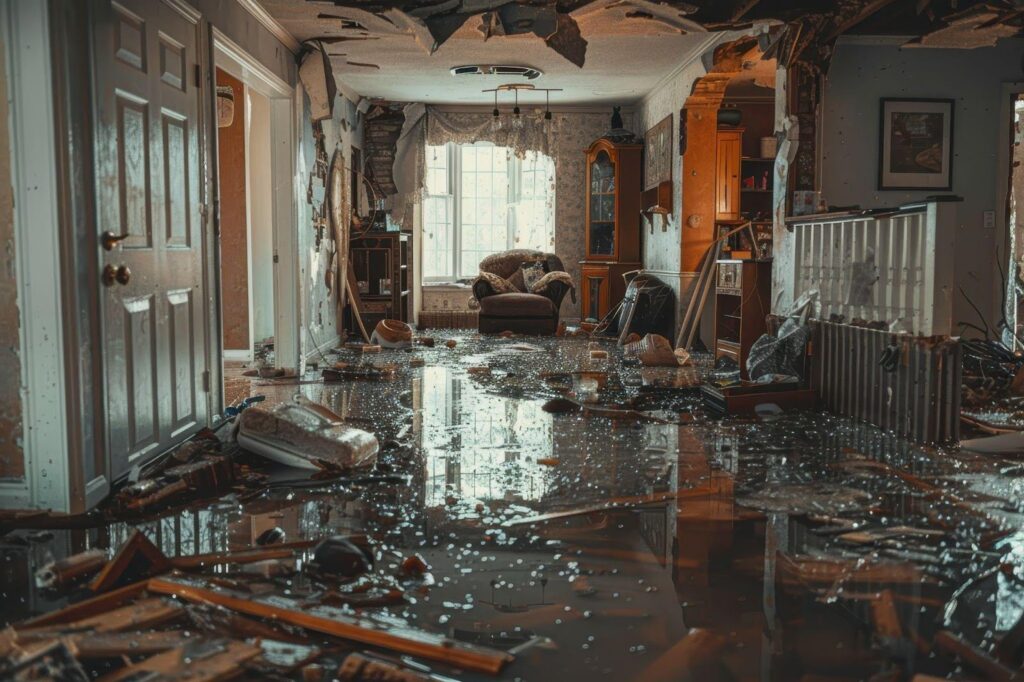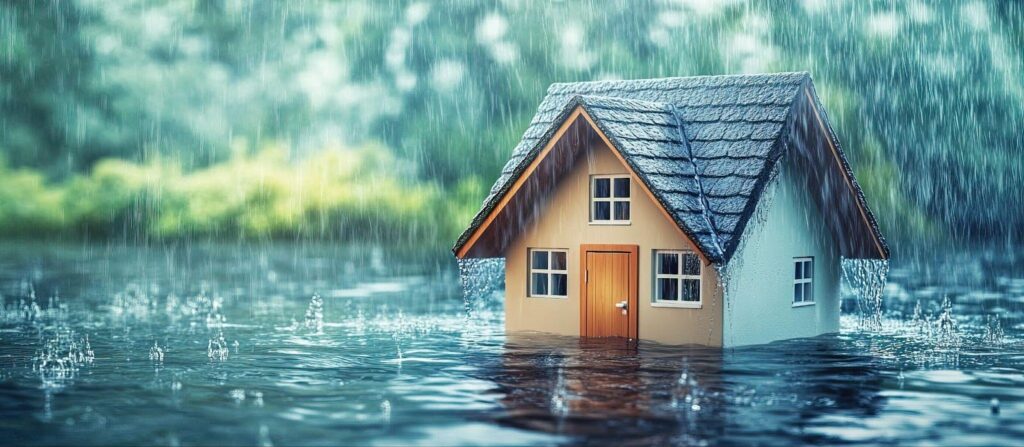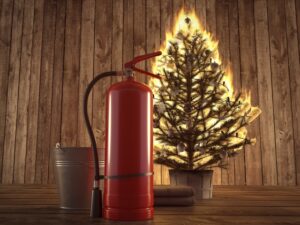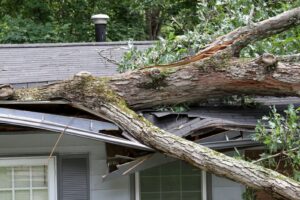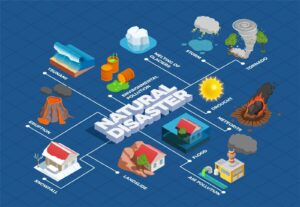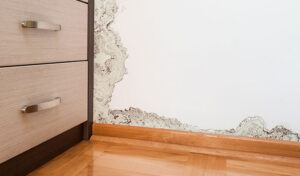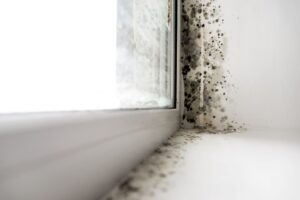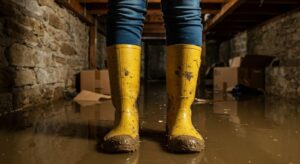Understanding each stage of storm damage recovery allows homeowners to make informed decisions, prioritize repairs, and confidently restore their homes.
We will break down the essential steps to assess damage, handle insurance claims, and work with restoration professionals. Following these key actions helps homeowners rebuild safely, reinforce their homes against future storms, and regain peace of mind.
Assessing the damage
Inspect your home carefully after a storm to identify hazards and damage. Before entering, check for immediate dangers like downed power lines, gas leaks, or unstable structures. Wear protective gear, including gloves and sturdy shoes, to avoid injury from debris, broken glass, or exposed nails.
Examine your home’s structure for visible damage. Look for missing shingles, roof leaks, or sagging areas that may indicate a risk of collapse. Inspect walls, ceilings, and the foundation for cracks that suggest structural weakening. Check doors and windows for shattered glass or warped frames, which signal wind or impact damage.
Identify flooding and water damage. Look for standing water in basements, crawl spaces, or flooring. Soft spots, buckling materials, or damp drywall indicate serious moisture issues. Mold spreads quickly in damp environments, so watch for musty odors and discoloration on walls or ceilings.
If floodwaters reach electrical outlets or appliances, do not touch them until a professional assesses the risk.
Find hidden damage that may cause long-term problems. Look for foundation cracks, especially along exterior walls where shifting soil and water intrusion weaken support systems. Check for electrical hazards like flickering lights, burnt outlets, or exposed wiring. If you notice a persistent musty smell, mold may be growing behind walls or under flooring.
Document all damage thoroughly. Take clear photos and videos of affected areas, including roof punctures, water stains, and structural cracks. Write detailed notes on the extent of the destruction to support insurance claims and restoration efforts. A well-documented assessment speeds up recovery and helps professionals restore your home efficiently.
Ensuring safety first
Inspect your home for immediate hazards before stepping inside. Look for downed power lines, leaking gas, and structural instability. If you smell gas or hear a hissing sound, evacuate immediately and call your utility provider. Avoid standing water near electrical outlets or appliances, as it may carry an active electrical current.
Turn off utilities if you suspect damage. Shut off the main gas valve if you detect a leak, cut power at the breaker box to prevent electrical hazards, and turn off the main water supply if pipes appear compromised. These steps help prevent fires, electrocution, and further damage.
Wear protective gear before entering storm-damaged areas. Sturdy boots, gloves, and long sleeves shield you from sharp debris, broken glass, and exposed nails. A hard hat protects against falling objects, while an N95 mask filters airborne contaminants like mold spores and dust.
Check for structural instability before walking through your home. Examine ceilings and walls for cracks or sagging, and avoid rooms with visible damage. If the roof looks compromised, stay out and call a professional for an assessment. Prioritizing safety protects you from injury and helps ensure a smoother recovery process.
Documenting damage and filing an insurance claim
Thorough documentation speeds up insurance claims and ensures fair compensation. Take clear photos and videos of structural damage, roof leaks, broken windows, and water intrusion. Capture both wide shots for context and close-ups of affected areas.
Document damaged appliances, furniture, and personal belongings with descriptions, estimated values, and purchase dates. List model numbers and serial codes for electronics and major appliances.
Save receipts for emergency repairs and temporary living expenses, such as tarps, boarding, hotel stays, and meals. Many insurance policies reimburse these costs under additional living expenses (ALE) coverage.
Report damage to your insurance provider immediately. Provide policy details, describe the extent of the loss, and ask about the next steps. Review your policy to understand coverage for structural repairs, personal property, and ALE.
Meet with the adjuster, walk them through the damage, and present your documentation. Show proof of temporary repairs to prevent further issues. Keep all claim-related records in a secure digital folder and follow up regularly to track progress and avoid delays.
Securing your home to prevent further damage
Take immediate action to protect your home from further destruction. Cover roof leaks with durable tarps to keep rain and moisture out. Board up broken windows to prevent water intrusion, pests, and unauthorized entry. Securing openings minimizes repair costs and preserves structural integrity.
Place sandbags or temporary barriers to block floodwaters. If your property faces a flood risk, position sandbags around doors, garage entrances, and basement windows. Clear clogged drains and direct water away from your home to prevent pooling.
Clear fallen trees and debris safely. Inspect your property for hazardous branches, uprooted trees, and scattered debris. Cut down unstable limbs before they cause more damage. Contact professionals for safe removal if large trees fall onto your home or power lines.
Act quickly to strengthen your home’s defenses, reduce repair costs, and create a safer environment for restoration.
Addressing water damage and mold risks
Extract standing water immediately to prevent structural damage and mold growth. Use industrial pumps, wet vacuums, and absorbent materials to remove excess moisture. Dry affected areas with fans, dehumidifiers, and open windows to speed up evaporation and reduce humidity.
Maintain proper ventilation and control moisture to stop mold from spreading. Mold thrives in damp conditions, quickly infiltrating walls, ceilings, and flooring. Run dehumidifiers in enclosed spaces, especially basements and attics, to keep humidity below 50%. Use air movers and exhaust fans to circulate fresh air and prevent spores from settling.
Inspect walls, ceilings, and floors for hidden moisture. Even after surface drying, trapped water can lead to mold infestations and wood rot. Use infrared cameras and moisture meters to detect damp spots behind drywall, under carpets, and inside insulation. If you find persistent dampness, contact a professional restoration team to prevent long-term structural damage.
Act quickly to limit water damage and mold risks. A fast response protects your home, reduces costly repairs, and ensures a healthier indoor environment.
Hiring professional restoration services
Hire storm damage restoration specialists to restore your home safely and efficiently. These professionals assess structural damage, extract water, remove debris, and prevent mold growth. Their expertise ensures proper restoration techniques and compliance with safety codes.
Choose a licensed, insured, and experienced restoration company. Verify credentials, read customer reviews, and check for certifications like IICRC (Institute of Inspection, Cleaning, and Restoration Certification). A reputable company provides transparent estimates, detailed contracts, and a clear scope of work. Avoid contractors who demand full payment upfront or lack proper licensing.
Understand the repair timeline and stay informed. The restoration process depends on damage severity, material availability, and insurance approvals. Professionals start with emergency mitigation, then move on to structural repairs and final inspections. Request regular updates and communicate any concerns to keep the process on track.
Working with skilled restoration experts speeds up recovery, prevents hidden damage, and ensures a safe home. Investing in professional services protects your property’s long-term stability and value.
Trust Total Flood and Fire Restoration to restore your home
Total Flood and Fire Restoration provides expert storm damage recovery services. Their team quickly removes water, repairs structures, prevents mold growth, and helps you navigate the insurance process. They work efficiently to restore your home and give you peace of mind.
Protect your home and speed up the recovery process. Contact Total Flood and Fire Restoration today for professional, reliable storm damage restoration.

